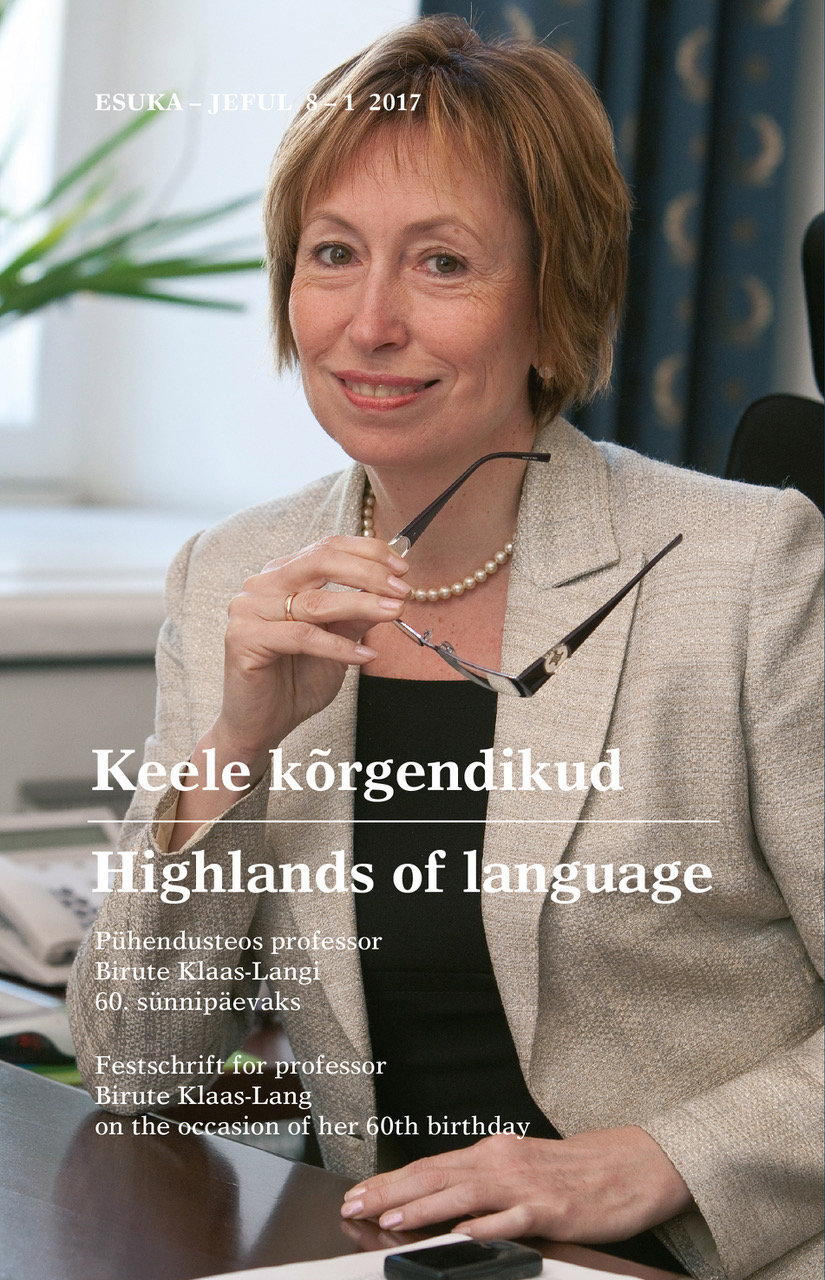Komitatiivi funktsioonidest eri aegade ja registrite eesti kirjakeeles
DOI:
https://doi.org/10.12697/jeful.2017.8.1.09Keywords:
komitatiiv, koosesinemine, funktsioonid, varieerumine, register, kirjakeel, eesti keelAbstract
Eesti komitatiiviga väljendatavad koosesinemisfunktsioonid moodustavad võrgustiku, mille keskmes on kaks prototüüpset funktsiooni, KAASNEMINE ja VASTASTIKUSUS. 17.–18. sajandi kirjakeele komitatiivi funktsioonid esindavad KAASNEMISE haru, 20. sajandi materjalis domineerib VASTASTIKUSUS. Komitatiivi funktsioonid on sajandite jooksul järjest laienenud. Tänapäeva kirjakeele materjalis on esindatud nii KAASNEMISE kui ka VASTASTIKUSUSE haru, mõlema kasutustendentsid seostuvad tekstiliigi funktsionaalse ja sisulise eripäraga. Kontaktkeeltest sarnaneb eesti komitatiivi funktsioonivõrgustik enim saksa keele ja vähim soome keele võrgustikuga.
Abstract. Helle Metslang, Külli Habicht, Tiit Hennoste, Anni Jürine, Kirsi Laanesoo, David Ogren: Functions of the comitative in different periods and registers of written Estonian. The various types of concomitance expressed by the Estonian comitative form a network, at the center of which are the two prototypical functions of the comitative, ACCOMPANYING and RECIPROCALITY. In the 17th–18th century written language, the comitative primarily expressed ACCOMPANYING and similar meanings, while the RECIPROCALITY function dominates in 20th-century texts. The functions of the comitative have grown broader over time. In more peripheral functions, the comitative even performs the functions of grammatical cases, encoding non-foregrounded core arguments – the semantics of the comitative have become blurred, and the grammatical relations it expresses have become less well defined. In the modern written language, both the COMPANION and the RECIPROCALITY branches are well-represented. Usage tendencies are tied to the functional and contentrelated characteristics of different text types: RECIPROCALITY is particularly common in fiction texts, while print media texts extensively utilize the INSTRUMENT function and often feature phrase-internal comitatives, illustrating their high textual density. In online comment sections the INSTRUMENT function is particularly prominent, while in MSN dialogues the COMPANION function stands out. Among contact languages, the network of functions of the Estonian comitative most closely resembles that of German and least closely resembles that of Finnish.
Keywords: comitative; concomitance; variation; register; written language; Estonian


